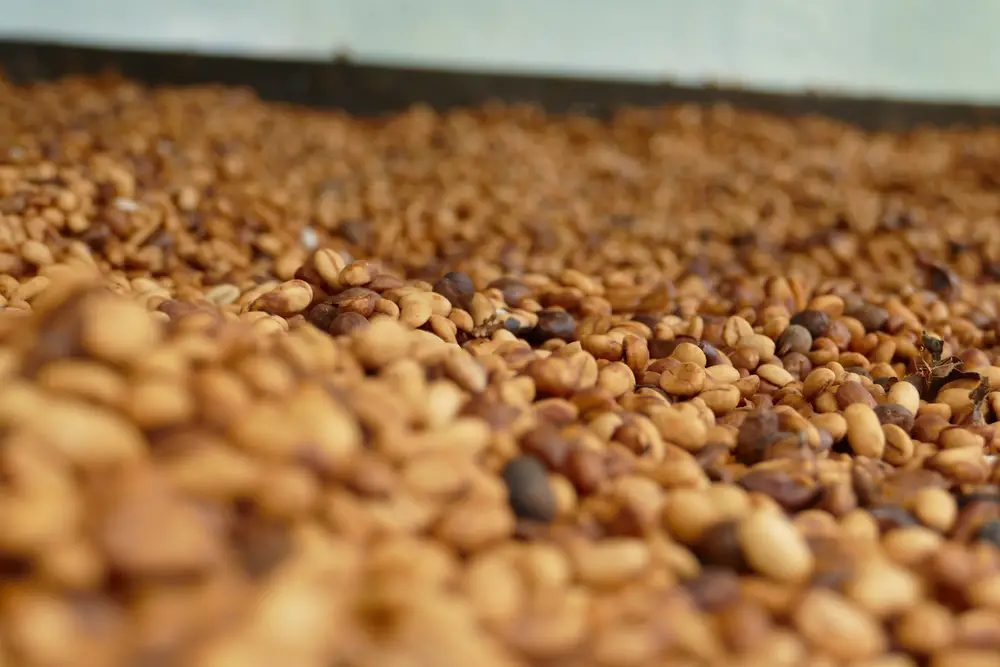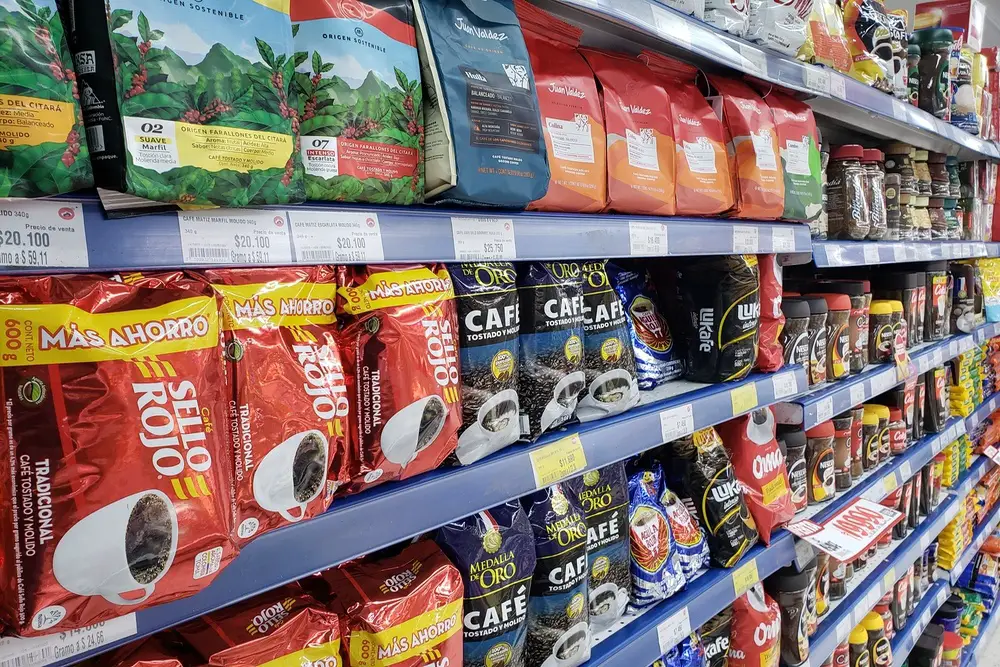When processing food there are also physical and chemical changes and processes that can affect our food and in some extreme cases even affect our health. In the following blog we explain how acrylamide behaves in coffee.
Table of Contents
What is acrylamide?
Acrylamide is a substance that can form when foods are heated to high temperatures. However, several very specific factors are required for this chemical to develop.
Food must be exposed to temperatures above 120°C and be rich in carbohydrates, amino acids and reducing sugars such as fructose and glucose.
At 120°C, the amino acids and sugars fuse together and the Maillard reaction occurs when these foods are cooked. Thanks to this chemical reaction, the food acquires a golden color and a crunchy texture. However, this point is not at all worrying because the risk of high levels of acrylamide in food only arises when the food is overcooked and its light golden color changes to a dark golden or almost black color.
Why should I care about the presence of this substance in my food, you might ask?
The reason for this is simple: according to the WHO (World Health Organization), it is considered a possible carcinogen when consumed in large quantities. Carcinogen means causing cancer.
Scientific research on acrylamide
Alarm sounded 20 years ago when, in 2002, Swedish scientists confirmed the link between acrylamide and an increased risk of certain types of cancer.
Studies on this substance have been conducted since the year of its discovery and the WHO classified this substance as a possible carcinogen, leading to action being taken in many places in this regard. The truth is that today, 20 years later, a direct link between this substance and the development of cancer in humans has still not been found. Scientists around the world assure that it is necessary to continue conducting studies and analyzes on this substance, since they cannot completely rule out its connection with cancer.
Over the years that these studies have been conducted, a number of species of rats and mice have been studied that have been given this substance intravenously and orally by mixing the acrylamide with drinking water or by injecting it directly into the animals’ bloodstream.
In these poor critters, acrylamide was lethal because in almost all cases the mice developed tumors, DNA mutations (which can lead to cancer), and changes in the nervous system, even though the amounts given to the animals are thousands to hundreds of thousands of times the normal amounts that the average person consumes.
Is acrylamide guilty of causing cancer in humans?
Despite studies conducted over the past 20 years, the amount of acrylamide required to make it toxic to humans has not yet been found. So, although it is a possible carcinogen, its consumption in the usual way does not lead to any health complications, ie the ingestion of small amounts of acrylamide is not harmful enough.
While there is insufficient evidence to support the claim that acrylamide use contributes to cancer, acrylamide particles have been found in tobacco smoke, meaning that smokers have up to five times more acrylamide exposure than non-smokers.
Which foods contain acrylamide?
Among the numerous foods in the world, those most likely to promote the development of acrylamide are the following:
- French fries
- Potato Chips
- Toasted Bread
- Cookies
- Roasted coffee
- Cereal products
However, manufacturers of these foods have been instructed by governments around the world to meet specific requirements depending on the product. Also, that the end result must not be higher than the specified amounts or justify the reason for the increase in the acrylamide content in the product, which has been successfully implemented worldwide.
For the products that we can control, we must avoid long cooking.
What is the connection between coffee and acrylamide?
Coffee is a product that has been under scientific scrutiny for many years, because in 1991 the IARC (International Agency for Research on Cancer) classified coffee as a possible carcinogen because it meets the requirements for the formation of acrylamide.
After numerous studies on coffee, it became clear that this substance does not grow easily in coffee, although the roast often exceeds 120°C (the temperature necessary for the growth of acrylamide), and further tests showed that coffee for human body is not carcinogenic.
The composition of the coffee can contribute to the formation of acrylamide. However, thanks to the controls put in place by governments, the manufacturing of the products is controlled as much as possible to avoid this substance.
Can Coffee Cause Cancer?
Coffee was on the WHO list of possible carcinogens for many years until it was removed from the list in 2016, but you may be wondering if the acrylamide in coffee can make you susceptible to cancer?
The short answer is no. Of the foods in question, coffee is the least likely to promote the growth of acrylamide, and since there are no results showing that acrylamide is carcinogenic in humans, coffee is the least likely to produce acrylamide.
How is acrylamide formed in coffee?
The answer is quite simple: acrylamide forms during coffee roasting when the temperature reaches 120°C.
Which coffee contains less acrylamide?
According to research conducted by the Institute for Agricultural Research and Development of the Basque Country, the types of coffee used to make espresso contain the least acrylamide, as they have a similar roast and grind.
The coffee that contains the most acrylamide is soluble coffee, because in order to achieve this texture in the coffee, very high roasting temperatures are reached and high levels of acrylamide in the composition can easily occur.
According to scientists, the ideal is to avoid consuming decaffeinated coffee in any of its forms, since manufacturing temperatures can exceed 160°C and acrylamide is formed from as little as 120°C.
Warnings
Remember that we are not scientists. We therefore recommend that you consult the official websites of the WHO and the universities that carried out these studies, such as B. Stockholm University, so that you can confirm any information we give you.
Check out the official websites for more relevant information on this topic.
Conclusions
Although it may seem daunting, this substance and its effects on the human body have been researched for twenty years and there is still no concrete evidence that it is a harmful substance. We recommend that you take care when cooking your food to avoid the formation of acrylamide, but remember that the occasional intake of acrylamide does not pose any risk to our health; however, if you are a regular smoker, this may be a sign for you to quit.



